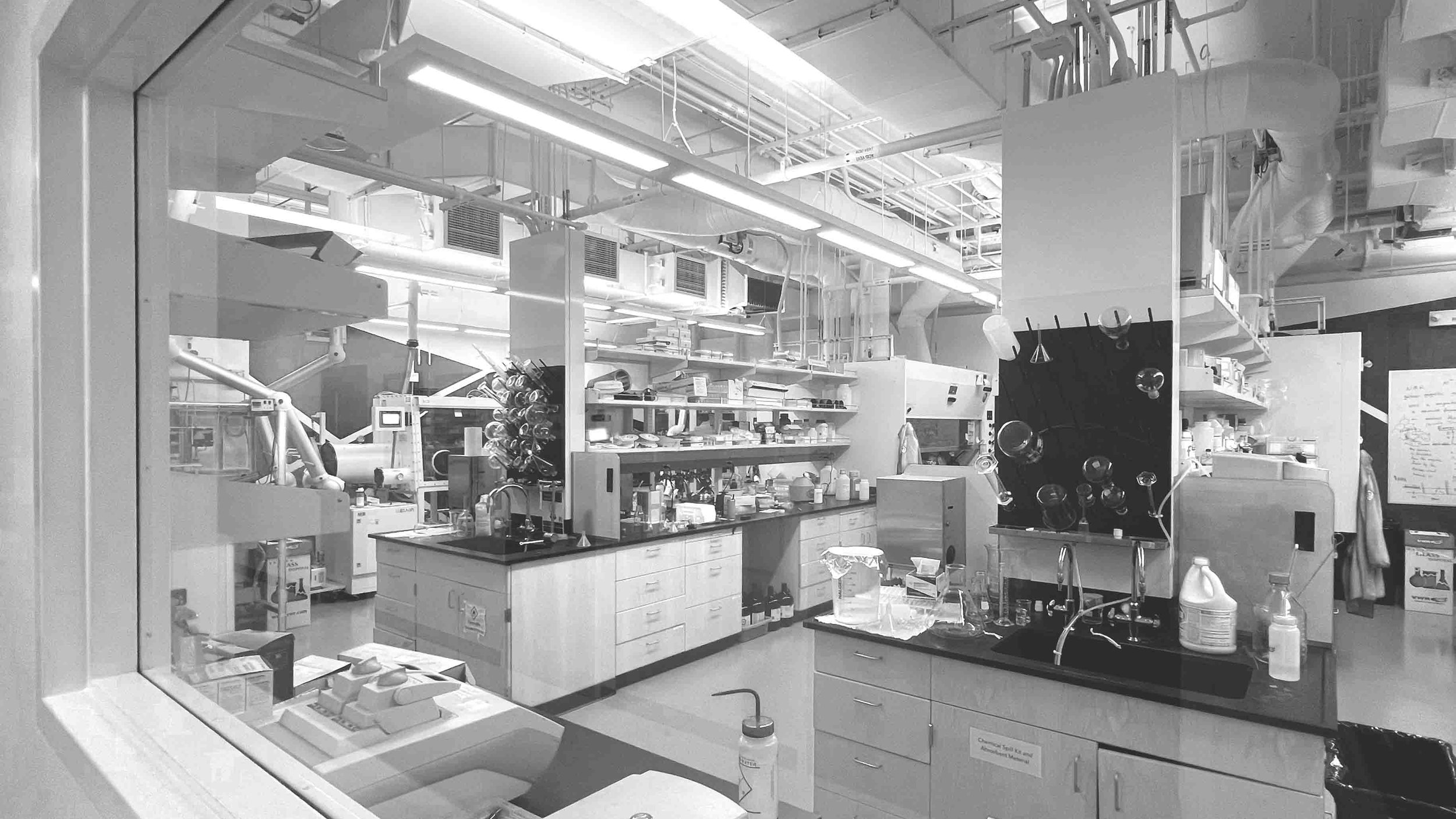
RESEARCH
We employ air- and moisture-free synthetic techniques, computational analyses, and a wide range of steady-state and time-resolved spectroscopies to understand the roles of transition metal electronic structure across areas of chemistry, physics, and biology.

RESEARCH
We employ air- and moisture-free synthetic techniques, computational analyses, and a wide range of steady-state and time-resolved spectroscopies to understand the roles of transition metal electronic structure across areas of chemistry, physics, and biology.
SPIN DYNAMICS
MOLECULAR QUANTUM BITS
The development of the next generation of information processing devices relies on the detailed knowledge of quantum phenomena at the single atom and molecule level. In quantum computers, quantum bits (qubits) of information could be stored by electronic spins in paramagnetic molecules. Understanding the spin relaxation mechanisms is critical since the information lifetime becomes limited by the spin dynamics.
Our group employs and develops new lines of spectroscopy to investigate how electronic spins lose their coherence through interactions with other spins and by exchanging energy with molecular vibrations. With a new approach rooted in ligand-field theory and group theory, we investigate spin-phonon coupling processes and develop strategies to minimize decoherence and the resulting loss of quantum information, particularly at elevated temperatures.
The superposition of electron spin states (represented by the up/down arrows) in paramagnetic molecules can be controlled and sensed by microwave radiation.
BIOLOGICAL QUANTUM SENSING
Having control over the spin dynamics could also allow us to implement them as quantum sensors (qusors). We seek to incorporate molecular qubits into biological macromolecules to enable controllable, fundamental studies of molecular coherence properties across different biochemical microenvironments and interfaces.
Our focus has been on understanding intramolecular vs. intermolecular contributions to the decoherence properties of quantum bits. Building reciprocal relationships between quantum biology and spin dynamics is necessary for developing quantum sensors, but it also improves our understanding of quantum processes needed for a broad range of applications of molecular quantum information science in technological devices.
The spin dynamics is affected by its environment, making it possible to use paramagnetic molecules as nanoscale sensors in biological systems.
PHOTOCATALYSIS
CROSS-COUPLING REACTIONS
Understanding and controlling cross-coupling reactions enable the construction of new C–X bonds (X = C, N, O, etc.) necessary for synthesizing existing pharmaceuticals and new drug candidates.
While precious metal Pd-based catalysts are largely used on an industrial scale, the combination of the disparate electron transfer properties of earth-abundant first-row transition metal catalysts and the possibility of harnessing light energy to generate uniquely reactive electronic states represents an attractive, sustainable approach to accessing new mechanistic possibilities for drug synthesis and discovery.
We use a combination of synthetic, spectroscopic, and computational approaches to define the critical electronic structure contributions to ground-state Cu- and Ni-catalyzed cross-couplings. Furthermore, we use and develop time-resolved spectroscopies to elucidate key excited state factors that allow for sustainable light-driven syntheses.
Direct excitation of a photoactive Ni(II)(Ar)(X) complex leads to Ni–C(Ar) bond homolysis to generate a key Ni(I)–X intermediate critical to cross-coupling reactions.
CO2 REDUCTION
The catalytic reduction of CO2 represents an avenue towards sustainable production of value-added chemicals needed for modern society. Iron porphyrin CO2 reduction catalysts are molecular species capable of producing CO2 reduction products via electrochemical or photochemical conditions.
Our efforts center on elucidating structure-activity relationships that can inform catalyst design criteria for enhanced efficiency or selectivity for desired products. We are particularly interested in the formation of highly reduced carbon products such as CH4 or methanol. Multiple proton/electron transfers are required to access these desirable solar fuels, and in turn, uncovering the reaction mechanism and speciation of catalytic intermediates is crucial. To do so, we merge diverse techniques such as ultra-fast/nanosecond transient absorption spectroscopy, spectroelectrochemistry, steady-state UV-vis absorption spectroscopy, and cyclic voltammetry, and correlate these data to results obtained in electrochemical or photochemical catalytic conditions.
Metallo-porphyrin and phthalocyanine molecules can convert CO2 into highly reduced carbon fuels such as methane and methanol through electrochemical and photochemical reactions.

Steady State Electronic Absorption and Fluorescence
Wavelength Dependent Photochemistry with Kessil LEDs
Circular Dichroism (CD) and Variable-Temperature Variable-Field (VTVH) Magnetic Circular Dichroism (MCD)
Circularly Polarized Luminescence (CPL) and Magnetic Circular Polarized Luminescence (MCPL)
Resonance Raman (rR)
Electron Paramagnetic Resonance (EPR)
X-ray Absorption and Emission (XAS/XES)
Resonant Inelastic X-ray Scattering (RIXS)
Transient Optical Absorption and Emission
Transient XAS/XES
Time-Resolved Kerr and Faraday Rotation
Inelastic neutron scattering
Density Functional Theory (DFT) and Time-Dependent DFT (TDDFT)
Ab initio methods (CASSCF/QD-NEVPT2)

Steady State Electronic Absorption and Fluorescence
Wavelength Dependent Photochemistry with Kessil LEDs
Circular Dichroism (CD) and Variable-Temperature Variable-Field (VTVH) Magnetic Circular Dichroism (MCD)
Circularly Polarized Luminescence (CPL) and Magnetic Circular Polarized Luminescence (MCPL)
Resonance Raman (rR)
Electron Paramagnetic Resonance (EPR)
X-ray Absorption and Emission (XAS/XES)
Resonant Inelastic X-ray Scattering (RIXS)
Transient Optical Absorption and Emission
Transient XAS/XES
Time-Resolved Kerr and Faraday Rotation
Inelastic neutron scattering
Density Functional Theory (DFT) and Time-Dependent DFT (TDDFT)
Ab initio methods (CASSCF/QD-NEVPT2)
